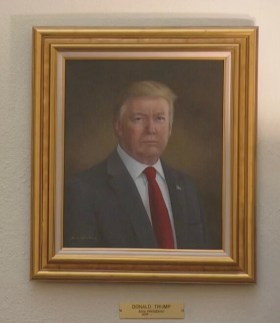In her two year preparation for this week’s opening of the new oh!art centre at Oxford House in Bethnal Green, Artistic Director, Pippa Bailey, had a mission: to reinvigorate community arts practice so as to give it general arts appeal. In the past, Bailey says, community arts has ‘always been associated with being really naff.’
Oxford House is the world’s first university settlement (or, Neighbourhood House, in North American speak). Established in 1884 as a centre for social education and religious work amongst the poor of East London, its first years of operation saw it establish local social clubs, charity groups and religious teaching classes. Today, Oxford House is a secular organisation that provides activities for all sections of the local community, works with refugees, and provides youth services. The opening of the £2 million oh!art centre, however, marks Oxford House’s first real exploration into the realm of the arts, and is something that the community felt was much needed.
Plans for the redevelopment of Oxford House began in 1996, and funders include The Arts Council of England, English Partnerships, Bridge House Estates Trust, Tudor Trust, Oxford House Development Trust, and the European Regional Development Fund. But Bailey, who joined the team at Oxford House two years ago, says that when she first arrived, ‘it was basically a building without an artistic vision.’ This was, she says, ‘extraordinary’, because of the centre’s location within the city’s artist quarters.
‘There’s a huge number of artists in this part of the world,’ she says. ‘Tower Hamlets and Hackney, the two adjacent boroughs, purport to have the largest concentration of artists in London, but there aren’t enough art centres and there aren’t enough places for them to work… given the way the culture’s set up, there’s still a lot of difficulty for minority groups getting access to mainstream media.’
Patrick Roberts, an Oxford House management committee member and leader of the local Institute of Fighting Arts, agrees.
‘I’ve been associated with Oxford House from the age of ten, and I’m 40-odd now’ says Roberts. ‘And I’ve been a youth club worker and involved in various projects as well as running martial arts clubs and I think that [oh!art] is something that [was] needed. It means that Oxford House will be able to offer loads of other opportunities and it will be welcomed by the community, because I’m aware of lots of young people into dancing and theatre and the art side of things.’
While the notion of giving minority groups a creative platform was part of the impetus behind the oh!art development, Bailey says she was wary of alienating other members of the increasingly diverse Bethnal Green community. ‘I come from a professional arts background and community arts has an appalling name,’ she explains. ‘It hasn’t really been re-invigorated since the 1970s, and so it’s been a process of trying to find ways of marrying professional arts with the local audience.’
‘The East End is where waves of migration have come for centuries,’ she continues, pointing out that the area is made up of members of the Bengali and Somali communities, as well as people of other ethnic minorities. ‘And then there is a real division between a [traditional] East End working class, and it’s quite close to the city fringes, so as house prices go up and yuppies move further east it’s also been infiltrated by loft conversions and that sort of thing.’
So, according to Bailey, ‘the trick is how do you programme [a centre] so that it has a general arts appeal, but [is] also able to support those local communities?’
The answer lies in programming that enables professional arts practitioners to work in collaboration with local practitioners, an idea which Bailey says has twofold benefits. ‘We need to find policy to enable people who perhaps don’t have any experience of working with other groups or in this context but who have an interest in it, [to] have access and share their professional values, just as you’ve got people at the grass roots coming up and really wanting to have their voices heard but not necessarily having the [professional] skills,’ she says.
As an example in point, Bailey highlights the oh!art ten-day launch programme’s Dance evening, on July 10, which will see the Royal Ballet perform alongside Roberts’ Institute of Fighting Arts. ‘Bethnal Green is famous for its martial arts… and this group has been based in the area for fifteen years,’ she says. ‘They very much see martial arts as an art form and to be able to put [them] on the same program [as the Royal Ballet] is exactly the type of thing we’re trying to encourage. The Royal Ballet know they’re not getting the kinds of audiences we have, so they want to work with us, and the local community are amazed that the Royal Ballet would want to come and perform [here].’
In encouraging diversity on this level, Bailey she says that she expects oh!art to work towards breaking down cultural divides at a high culture/low culture level, and between people of different ethnicities. Through participation and encouraging people to respond to work they might not otherwise see, she says, art spaces like that at Oxford House can help unite fractured communities.
‘A lot of prejudice is just simply fear,’ she says. ‘But [oh!art is] about encountering something different, and thinking that “Oh well, maybe those people who live up the road aren’t that different from me.”’
The oh!art launch celebrations are taking place this week and next until July 13. For more information, visit the Oxford House website, HERE




